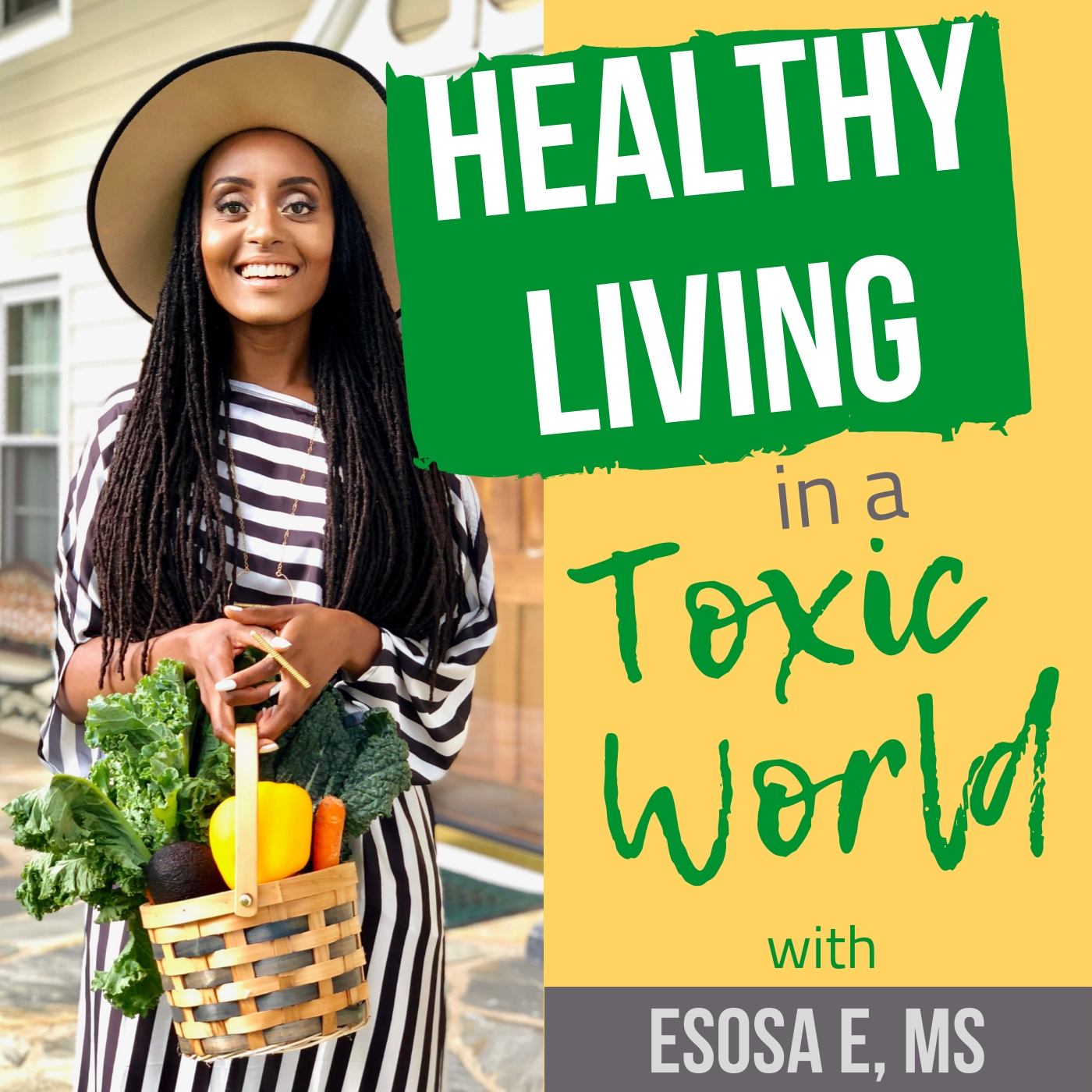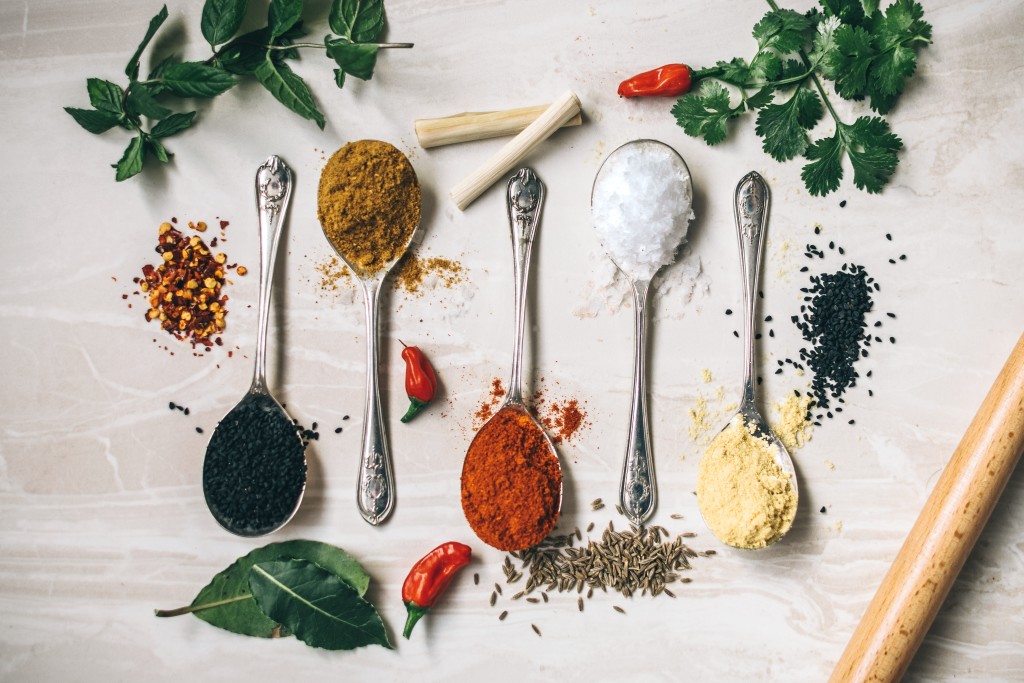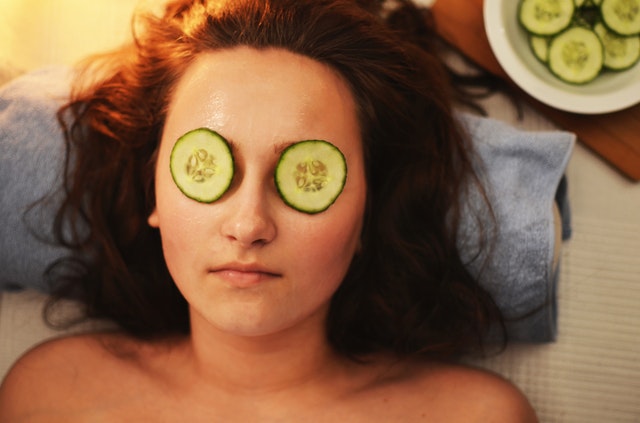Tags
acne aging anti-aging beauty detox diet exercise fasting healing health healthy lifestyle healthy living healthy recipes inspiration juicing Living la Vida Raw meditation mindfulness Move Your Body Natural Beauty natural cures Natural Cures natural remedies nutrition nutritionist parasites raw raw food Raw Food for Thought raw foods raw girl Raw News raw recipes Raw Spirit Recipes skin spirulina stress vegan vegan lifestyle vegan recipes vegetarian Veggie Love wellness yogaNewsletter Sign-up
Tag Archives: health
All New IG TV Show: Health Bytes!
 Hey lovelies! 2019 is here, and I’ve got more new content for you. Hopefully you’ve already subscribed to my new podcast, and yesterday I also launched the first season of my IG TV show Health Bytes! If you do not follow me on instagram, head on over to @therawgirl and hit follow so you can keep up with the weekly episodes. Each week I’ll also be posting the transcript from the show, here on the blog. Please send in comments, questions or topic ideas for season two, I would love your feedback. -XO Esosa E, MS AKA Raw Girl
Hey lovelies! 2019 is here, and I’ve got more new content for you. Hopefully you’ve already subscribed to my new podcast, and yesterday I also launched the first season of my IG TV show Health Bytes! If you do not follow me on instagram, head on over to @therawgirl and hit follow so you can keep up with the weekly episodes. Each week I’ll also be posting the transcript from the show, here on the blog. Please send in comments, questions or topic ideas for season two, I would love your feedback. -XO Esosa E, MS AKA Raw Girl
EPISODE 1: The Dangers of Health Fads
OMG have you tried keto yet? What about the low fat or low carb craze? If you can’t keep up with the latest health fads and are overwhelmed with the massive amounts of contradicting information out there, this one’s for you boo! Welcome to Health Bytes!
I’m not sure if you noticed but every year there’s a new health fad being pushed as the latest way to lose weight, stay healthy, OR to binge on a bunch of foods that aren’t so great for you. Whether it be the keto craze, the myth that fat is bad for you, or the obsession with low carbs, following health fads can miss the mark for several reasons. Let me break it all the way down for you :
TO start, the problem with health fads is that they are usually about getting results quick and not about maintaining your health or longevity. I get it! We live in a YOLO society, but when you are 80 and have heart disease, you may regret the years you spent on an Atkins diet. At the end of the day, healthy living should not be a race. and the diet we adopt should provide us with immediate health boosting benefits as well as supply adequate nutrients to keep us healthier as we age. Of course, you diet may adapt as you age to accommodate your bodies’ needs, but following a fad can set you up for building a nutritional foundation that is on shaky ground.
Another problem with fad diets: they are not personalized and do not account for specific conditions. I personally believe in bio individuality. We are all uniquely designed and have specific genetic makeups. It’s incredibly important that our diets take those factors into consideration, and also provide the right balance of nutrients to help us heal if we have a specific disease or imbalance. Our diets should be individualized, and should also include some of the healthiest versions of ancestral foods based on where our families originate. When we keep some of the good foods our fathers father ate before us, we are maintaining nutrients in our diets that honor our genetic makeup.
Last but not least, one problem with adopting health fads is that when the craze is happening, there is rarely adequate evidence based research to demonstrate the full repercussions the diet may have on your health long-term. When we get so focused on the immediate short term goals of weight loss we can sacrifice more important aspects such as cardiovascular health. We all know several health fads that were all the rage; only to find out years later research has debunked them as myths. I’m sure you know of the low fat craze which swept America, only to find out later that healthy fats are incredibly important for maintaining good cholesterol and heart health. For instance, research studies have recently shown that low carb diets that are high in animal protein actually decrease longevity.
The moral of the story? Before you jump on the latest health fad, think twice and do your research. It’s a much better use of your time to consult with a nutrition specialist one on one and build a lifestyle that is tailored to you and includes a balanced intake of protein, complex carbs, and healthy fats.
I’m Esosa E. Clinical Nutritionist & Founder of rawgirltoxicworld.com, until next time, your wealth is in your health!
New Podcast Alert!
Happy New Year 🙂 I’m really excited to hail back to my radio days and launch my podcast Healthy Living in a Toxic World, now available on iTunes, Google Play, and Spotify! In this podcast, I’ll be bringing you weekly conversations with health experts, longevity Sheroes and Heroes and insights on your mental, physical, and emotional health. Season one was recorded awhile back but has some serious GEMS! Guests include incredible experts like Dr. T. Colin Campbell author of The China Study, Dr. James Maas New York Times Bestselling author of Power Sleep, Victoria Moran @mainstreetvegan Author, podcaster and founder of Mainstreet Vegan Academy, Mimi Kirk former PETA’s Sexiest Vegetarian Over 70, Bernardo La Pallo who at the time of interview was 109 years old & more!
The Art of Creating Healthy Rituals
If you spend any time studying the world’s most successful and productive people or high performance athletes, you will discover that they all have many things in common. One specific common denominator is the ability to create and maintain healthy rituals that allow them to maximize their time, energy, and focus throughout the day. What is a ritual? Rituals are essentially habits that we can create and repeat over and over. What can make a ritual special is that they can become sacred. Just as religious ceremonies perform certain rituals, the daily actions you take over and over consciously or unconsciously are also affecting your daily life. When you take control and create rituals that feed your soul, you take better control of your destiny. Below are some steps to help you begin on your path to establishing rituals that feed your mind, body and spirit.
Baby Steps. You may have a very clear vision in our mind of who you want to be. The healthier version of you exercises every day, loves juicing, and is a meditation junkie. The reality is though you may be starting with getting in 1-2 workouts a week, 5 minutes of meditation, and simply remembering to eat our vegetables. Rather than get overwhelmed by how far you are from your grand vision, it’s important to begin where you are and take small actions. Start by writing down that grand vision –who you want to be at your best in all areas, and then make very small actionable goals that you can do daily for each. If you want to make time for meditation maybe you begin with 5 minutes, and then slowly increase in increments until you reach your goal.
Push through resistance with preparation. This is also known as stop saying YES to your excuses. When we are trying to make major changes, it can be easy to listen to that voice in our head that seems to come up with every and any excuse to not follow through. The hardest part of changes is pushing through resistance and showing up, until we get results. That may mean going to sleep in you workout clothes so you can roll out of bed in the morning and hit the gym, setting meal prep days on the weekends so your nutrition is on point during the week, creating a healthy snack drawer at work so you don’t give in to office sweets. Very often when we live a life that is ritual-free we are used to being at the mercy of our circumstances. Creating rituals empowers us, and preparation helps us honor the goals we set one day at a time.
Create accountability. We all need different levels of accountability to have success and you may think you can go it alone, but by doing so you may being doing yourself a disservice. Why? The power of minds in agreement is real, and it’s important to work with someone who knows more than you in a specific area so that your actions can be more effective. Every seen someone desperate to reach a goal and trying everything and anything, expending all their energy only to burn out when there is no progress? Take that same person and give them a mentor or coach who has achieved or knows how to achieve the goal and they almost get a “shortcut” blueprint to reach their goal faster, calmer, and with more laser focused energy. Accountability can also be created by including others in your ritual. Maybe you go with friends to yoga regularly, or set gym dates with your bff. Bringing others along makes you more likely not to forget and also makes the experience a social one.
Set Reminders & Notifications. In order for a ritual to become one, you need to repeat it often. That means scheduling in time daily or weekly, and making sure you show up nine times out of ten. When you start to prioritize your rituals and write them down in your planner and set notifications on your phone, you are more likely to remember to do them in the first place, and start hardwiring your brain to make it a habit.
Tracking & Journaling to Assess Impact. Tracking can feel tedious for some, but for others it serves as a gentle reminder of our success or failure with implementing new habits. It doesn’t have to be boring, as now there are apps on the iPhone to track almost anything from water intake to mediation. You can also make tracking fun by using gold stars or stickers in your planner. Make it festive so that you are celebrating the small daily wins. Beyond tracking, even more important is really taking note of how our ritual is slowly shifting our lives. One amazing way to do this is to journal daily and note any changes in the flow of your day, emotions, and overall energy. This allows you to look back and review how your new ritual is improving your life and gives you positive data to support continuing it, or adjusting to better suit you.
Choose Rituals that Bring Your Joy. Part of the way you can create lasting rituals is to actually incorporate things in our lives that you love to do. Your ritual should give you more energy, peace, or add to your emotional, physical, or spiritual wellness. As you practice them, it’s really important to stay completely present and focused on the joy they bring you, and in the space of gratitude that you have taken time out for yourself.
7 Simple Weight Loss Tips
It’s almost Christmas!!! Hope you and yours have a merry one, and also managed to avoid starting the New Year with an extra ten pounds to lose added to your resolutions. Weight loss and weight maintenance can at times seem very daunting because there is a plethora of information out there on the topic. Between fad diets, weight loss success stories, and the wide range of experts claiming to have solutions weight loss can start to seem overwhelming or confusing. In my clinical practice I see clients daily struggling with weight loss and maintenance, and these are some simple tips that can help you stay on track.
- Eat Breakfast Daily. A common mistake many people make when they are trying to lose weight is to skip meals. Although it seems logical that if you eat way less or next to nothing at all you will lose weight, that is not the case. When you are undernourished is your body thinks you are starving and conserves fat. By starting the day off with a balanced breakfast (which can be light) we give our body essential nutrients it needs and help to prevent overeating later in the day.
- Weigh yourself at least once a week. Don’t go overboard with this, but monitoring your weight at least once weekly can help you stay on track and make sure you are not unconsciously gaining weight after all of those holiday parties! When weighing yourself try to do it first thing in the morning before meals and at the same consistent time. If you weigh yourself more than once a day you may notice that in the evening or after meals you weigh more which is natural. It’s ideal to only weight yourself once and not get too caught up in the natural daily fluctuations that happen with additional water and food.
- Watch less than 10 hours of TV per week. Reducing the amount of sedentary in your day overall can go a long way to improving weight maintenance and helping with weight loss. Long hours of TV watching is not helpful for many reasons. In addition to the fact that it is a sedentary activity, you may find that while you are watching you also eat. When we eat in front of the television, we tend to overeat ad be less conscious of the portions of food we are consuming. During TV programs there are also multiple advertisements for fast food which can lead us to crave less than healthy foods. If you are going to watch TV for long periods, try exercising while you watch so that you are moving towards your weight loss goals and burning calories.
- Exercise every day, or at minimum two to three times per week. Wellness guru Jack Lalanne once said “Exercise is King. Nutrition is Queen. Put them together and you have a kingdom.” Regular exercise is essential for weight loss, maintaining healthy weight, and remaining youthful. Research has shown that those who exercise regularly are sometimes 10-20 years younger than their non-exercising counterparts.
- Use a food activity / diary or log. Tracking your food and activity keeps you accountable for your health goals. Sometimes we can over or under exaggerate our health habits, but when it is clearly written down we are faced with the truth of our habits and can more easily make adjustments to help us reach our goals. The great news is there are many apps that can assist with tracking including Lose It! And My Fitness Pal. If you are not an app person, you want to use good old fashioned pen and paper to log your meals and that works too!
- Choose a low calorie eating plan. If you are trying to lose weight you may have heard that calories matter. Although the quality of the food you consume can also help encourage weight loss, it is important to be aware of quantity. But where do you start? A simple way to find out what calorie level to work for you is to calculate your basal metabolic rate. There are many basal metabolic weight calculators online and all you need to input is your age and height. You’ll want your calories to remain somewhere between 500-1000 above your BMR depending on your activity level. The best way to receive professional guidance on this is to see a nutritionist or dietician who can create a plan for you.
- Limit fast and processed foods. Consumption of processed food derails your progress and speeds weight gain. When we eat whole nutrient dense foods we avoid refined sugar, refined flours, and excess sodium which increases inflammation and lead to weight gain over time. It’s been proven that the less you eat out the less likely you are to gain weight and you can eat larger quantities at home and lose weight than you can at fast food or restaurants. When we eat fast food the other issue is that our body does not actually receive the nutrients it needs to function optimally, so we don’t get the internal cues to stop eating. On top of that, most processed foods are scientifically designed to make us crave more of them! The added sugars and salt become addictive, but the food does not satisfy our daily nutritional requirements.
Healthy Living in a Toxic World – Episode 1: The Ageless Woman
In this episode of Healthy Living in a Toxic World, I speak to Annette Larkins a living longevity expert, also known as “The Ageless Woman” about what incorporates in her diet and lifestyle to stay ageless.
We discuss:
- How a genetic background for disease can be trumped by lifestyle
- The importance of a positive mindset for staying ageless
- The raw food diet and what kinds of supplements help contribute to staying youthful
- Her personal health journey that led her to a raw food diet
- Annette’s top tips for living a long healthy life
- Important lifestyle habits to help you stay ageless
& More…
Podcast: Play in new window | Download
5 Ways Toxic Work Environments Can Damage Your Health
Finding work that you love and are passionate about seems easy, until you discover that even if you do find it, in the professional world, you may still have to navigate work environments that can be extremely toxic. Unfortunately, there are many people in positions of power in professional environments who use their position to abuse, shame, belittle, and micromanage their employees. The worst kinds of bosses, can terrorize their team, leaving them in a state of fear twenty-four seven. It is really important to take stock of your work environment and really assess if it is doing more harm than good to your peace of mind. If you are in a toxic environment remember that you can either choose to stay, or choose to plan your transition. But it is a choice, and you do have the power to find an environment that nurtures your professional growth and allows for peace of mind. Below are some ways that toxic environments can damage your health. If you are wrapping up this year and any of these points sounds familiar, you may need to start planning your glorious exit to a healthier work environment for 2019! -XO Raw Girl
Depletion of adrenal hormones or lead to stress related diseases. Unfortunately, many people when faced with environments, co-workers, or bosses that make their daily work extremely difficult choose to stay in those situations for years, only to later find that they have gained weight, have hypertension, or other serious chronic health conditions. After staying in a situation where there is repeated stress, your body is eventually going to try to get your attention by producing dis-ease. This is why it is extremely important to note how toxic environments can slowly erode your health, and take immediate precautions if you believe your situation warrants it.
Create Addictions to Negative Emotional States. Over time, if you stay in a toxic work environment you may get addicted to having a bad day. Do you notice that you are always complaining, grumpy, on edge, and nothing seems to be able to snap you out of it? This may mean that over time after repeated experiences that were unpleasant, your mood has now become a personality trait. How do we change this? Well of course you can start looking for other work and planning your exit, but you can also do inner work that slowly changes how you relate to your work environment. This means spending quality time each day with some of mindfulness practice or meditation. Remember you cannot control what happens to you, but you can control whether you respond or react. Mindfulness starts to help us respond and create new ways of looking at the world around us with increased empathy.
Can contribute to a feeling of apathy or paralysis. There’s almost nothing worse than apathy, or that feeling that negative experiences in an environment have literally sucked away any desire you have to contribute. The worst kinds of toxic work environments are the kind that reward subpar behavior and push back against innovators, or employees who want to make positive changes and shake up the status quo. In any high growth and dynamic company culture, usually the opposite is the same, innovators are given the opportunity to flourish, and there are clear and integrated rewards for employees who go above and beyond the call of duty.
Toxic environments can normalize shame and erode self esteem. Some supervisors consciously or unconsciously make statements that undermine your worth as an employee or a human being. Perhaps your boss tries to make you feel bad for requesting pay that is commensurate with your experience, or they consistently make passive aggressive comments about your performance that leaves you edge and never sure about where you stand with the company. If you are in a situation like this, do yourself a huge favor and run for the hills. After coming up with a suitable game plan of course. This kind of management can do real insidious damage because if you stay long enough your confidence may wane, and you may begin agreeing with the statements made, or even if you survive with some measure of self-esteem you may become bitter and this can affect how you interact with others in the company.
Toxic environments tend to bleed into interpersonal relationships, take away from quality of life, and self-care time. Some toxic environments are toxic simply because they do not allow for adequate work life balance. Is your boss always dumping a pile of papers on your desk right before closing? Do you only have time on the weekends to catch up on sleep and grab groceries? Do you never see your friends, take vacations, or engage in social activities after work? You may be in a toxic work environment, or you may someone who needs to reexamine your relationship with work. There are some of us who believe that our work is our worth and the busier we are the more important we are. Not the case. Living in the land of burnout should not be badge of honor, so it’s important to make sure you are not neglecting your health, self-care, or relationships which are a part of the overall measure of a balanced healthy life. If you are in a toxic environment, setting healthy boundaries is going to be key and having difficult discussions with your superiors. Is it important to work hard yes! But to have all of your evenings taken away and no social support, eventually will cause imbalance in your personal life and health status.
The Health Benefits of Green Matcha Tea
If you are concerned with remaining ageless, losing weight, or just boosting your intake of antioxidants, green matcha tea needs to be on your radar. I’m all about agelessness and skipping botox for life, so these days you will find me in my office alternating between sipping green matcha and getting my daily water intake in. Although green matcha tea comes from Camellia sinesis the same plant that green tea is derived from they do have some key differences. Green matcha is essentially stone ground tea leaves, and is grown by keeping the plant covered for 20-30 days which increases chlorophyll production, boosts amino acid content, and makes for a darker green hue.
To give you a clearer picture about how potent green tea matcha is, to get the effects and similar nutrient content of one cup, you’d have to consume 10 cups of green tea. Green matcha is extremely high in antioxidants, which are act as our bodies’ defense agents, lower our risk for chronic disease, and work to stabilize free radicals and slow the aging process. Green tea matcha actually contains more antioxidants than goji berries, pomegranate, blueberries, acai, broccoli, and spinach, all of which are antioxidant powerhouses. When it comes to weight loss green tea matcha has been shown in studies to increase the oxidation of fat, especially in women. Another small study that was conducted on men, showed that taking green tea extract during moderate exercise was able to increase fat burning by 17%.
Other researched benefits of green tea matcha include improved mood and mental performance due to some of the main constituents in the tea including: phytochemicals, small amounts of caffeine, L-theanine, and epigallocatechin gallate (EGCG). L-theanine promotes alertness and helps to keep energy levels stable after consuming caffeine, and has also been shown to boost alpha wave activity in the brain which can provide you with an awesome dose of relaxation and decrease your stress levels. Catechins are beneficial compounds found in green tea, and have been estimated to be 137 times greater in green tea matcha. ECGC is a type of catechin that has anti-cancer properties and is abundant in matcha.
After learning about all of the amazing ways matcha can enhance your health, you are most likely wanting to know how to best prepare it so you can reap the wonderful benefits. The good news is, preparing matcha is simple. You can buy matcha powder in bulk or in prepackaged smaller packets already portioned out, and mix 2-4 grams of matcha powder or 1-2 teaspoons into 8-10 oz of hot water. For thinner tea use more water. To spice things up you can also get creative and add milk or non-dairy milk and make green matcha lattes. -XO Raw Girl
References:
Dietz C, Dekker M. Effect of Green Tea Phytochemicals on Mood and Cognition.
Curr Pharm Des. 2017;23(19):2876-2905. doi: 10.2174/1381612823666170105151800.
Review. PubMed PMID: 28056735.
Willems MET, Şahin MA, Cook MD. Matcha Green Tea Drinks Enhance Fat Oxidation
During Brisk Walking in Females. Int J Sport Nutr Exerc Metab. 2018 Sep
1;28(5):536-541. doi: 10.1123/ijsnem.2017-0237. Epub 2018 Jun 19. PubMed PMID:
29345213.
Venables MC, Hulston CJ, Cox HR, Jeukendrup AE. Green tea extract ingestion,
fat oxidation, and glucose tolerance in healthy humans. Am J Clin Nutr. 2008
Mar;87(3):778-84. PubMed PMID: 18326618.
Yamabe N, Kang KS, Hur JM, Yokozawa T. Matcha, a powdered green tea,
ameliorates the progression of renal and hepatic damage in type 2 diabetic OLETF
rats. J Med Food. 2009 Aug;12(4):714-21. doi: 10.1089/jmf.2008.1282. PubMed PMID:
19735169.
Taste As Medicine: Using the Energetics of Food to Heal
In all of the major ancient systems of healing including traditional Chinese medicine, Ayurveda, Native American healing protocols, the taste of food and herbs has been recognized as a form of medicine. In each system, how taste are used to indicate healing is unique. By understanding how our bodies’ individual react to different tastes, we can get a better understanding of how we are being affected physiologically, and also how to eat to bring ourselves back into balance. The five flavors that should be a part of all of our meals include: sweet, salty, sour, pungent, and bitter. At various points in our lifespan we may find that we gravitate more to certain tastes, but if we overdo it, we can throw our system off balance. Below is a brief breakdown of how the each of the flavors affect your body so that you can be aware. As you read through, ask yourself if there are certain flavors you feel you eat in excess, or others you never eat at all. By making a mental note you can choose to actively balance your foods choices moving forward and maybe even try new options. -XO Raw Girl
Sweet foods, which also includes bland foods are high calorie foods that are heavy, provide high nutrient content in the form on fat, protein,carbs, and essential vitamins and minerals. Eating sweet or bland foods has a nourishing effect on the body and is also grounding and comforting. Consuming excess sweet/bland foods however can cause lethargy, sluggishness, reduce appetite, poor digestion, improper elimination, increase mucus production in the body and difficulty focusing. Some examples of sweet/bland foods include: animal fats, eggs, meat, milk, fruit and fruit juices, grains, nuts and seeds, root crops and winter squashes. Herbs include: cinnamon, fennel, goji berry, licorice, marshmallow, and shatavari.
Pungent foods which includes foods and herbs that are “spicy” are stimulating and can help to balance more potent flavors such as sweet and salty foods in dishes. Consuming pungent foods can stimulate digestion and assimilation and pungent aromatic herbs such as ginger, black pepper, and sage also help to relieve symptoms of gas and bloating. If you consume pungent foods in excess you can experience irritability, exhaustion, feel emotionally taxed or overstimulated. Some examples of pungent foods include: arugula, cabbage, coffee, horseradish, hot peppers, mustard greens, radishes, raw onions, leek, garlic, and watercress. Herbs include: basil, black pepper, cayenne, cinnamon, clove, cumin, ginger, mint, nutmeg, rosemary, sage, thyme, and turmeric.
Sour foods cause tissue contraction, can tone mucous membranes, and stimulate release of bile from the liver and gallbladder. The sour taste is generally cooling, moistening, and toning in small amounts and is helpful in digestion of fats, oils, and protein rich foods. Sour foods can also enhance If consumed in excess, sour foods can cause heat, aggravation the GI tracts, hunger, and low blood sugar symptoms. Excess can also result in skin conditions such as acne, eczema, psoriasis, boils, and aggravate arthritis. Some examples of sour foods include: berries, citrus, fermented dairy, fermented vegetables, some fruits such as green apples, grapes, plums, kombucha, miso. Pomegranates, tomatoes, vinegar, and wine. Herbs include: Hawthorne berry, hibiscus, rose hips. Rose petals, schizandra berry and sorrel.
Salty foods when eaten in moderation promote proper digestion and improve nutrient absorption. In excess, salty foods can irritate inflammation in the body or on the skin such as rashes, and cause emotional irritation, agitation. Too much salt also causes the body to retain water and can lead to edema, swelling, and increased blood pressure. Salt has a grounding, heavy, moistening, soothing, and warming effect in the body and when used in cooking it draws out other flavors. If you are nervous, struggle with anxiety, or have dry skin, hair, or nails you may benefit from consuming more salty foods if your blood pressure is not high. The best form of salt to consume is unprocessed and unrefined salt that is rich in minerals which are nourishing to the musculoskeletal system. Some salty foods include: anchovies, celery, smoked meat, hard cheeses, nettles, meat, spinach, olives, swiss chard, and sea vegetables. Herbs include: cumin, celery seed, cilantro, coriander, dill, parsley, and lovage.
Bitter foods may be the least popular foods to consume, but actually happen to be the most metabolically active of the five core flavors! Consuming bitter foods promotes detoxification, promotes hormone regulation, stimulates metabolic functioning and the breakdown and assimilation of nutrients. Bitter foods have a cooling, drying, and anti-inflammatory effect on the body and stimulate the entire digestive process. Beyond relieving digestive related symptoms such as acid reflux, heartburn, and other GI tract disturbances, getting in a little bitter every now and then can also support a healthy appetite, improve heart health, lower cholesterol, help with weight management, and improve blood sugar balance. Despite all of these amazing benefits, bitter foods tend to be the most neglected and are not staples in the Western or Standard American Diet. Some examples of bitter foods include: artichoke, bitter lettuces and salad greens, cocktail bitters, coffee, black tea, green tea, dark chocolate, dark leafy greens. Bitter herbs include: burdock root, caraway seeds, chamomile, coriander seed, dandelion root, fenugreek seed, orange peel, rosemary, sage, thyme,and yellow dock.
References:
Nickerson, B. W. (2017). Recipes from the herbalists kitchen. North Adams, MA: Storey Publishing.
10 Fundamentals of Self-Care
One of the true markers of health is resilience, the ability to bounce back after any major or minor stressor. The regular practice of self-care to “fill your well” helps to increase your resilience and boost your overall health long term. Below are fundamentals of self-care to help you focus attention and create healthy rituals in specific dimensions of your wellness. -XO Raw Girl
- Proper Nutrition: Eating properly is essential to good health and spending the time to really assess what your nutritional requirements are is key. All of us are different, and it’s important to remove any foods that cause inflammation, allergens, or even mild food sensitivities. You can also spend time assessing the appropriate levels of protein, healthy fats, and carbohydrates that makes you feel at your best, and place emphasis on eating whole unprocessed foods.
- Water is needed by your body to function properly and to encourage proper elimination. To determine the amount of water that is adequate for you, divide your body weight in half and drink that many fluid ounces of water. For a woman weighing 140 pounds, 70 fluid ounces of water will be ideal to keep her hydrated and the metabolic processes in her body functioning optimally.There is a thing as too much water, so you can generally try not to exceed 125 fluid ounces.
- Sleep is the pillar of health that must be the foundation for other aspects of wellness like diet and exercise. Sleep deprivation increases our insulin resistance, influences the hormones that affect our cravings, decreases our memory recall and retention, and can decrease our alertness and motor skills while driving or at work. The sleep requirement for you is going to be unique to your body, but a good generally rule of thumb is to aim for a minimum of 7-8 hours.
- Mindfulness when practiced regularly can change the course of your day for the better. Taking in deep breaths brings oxygen to the whole cellular structure and relaxation skills can help you counteract the effects of prolonged or chronic stress, and also learn to respond rather than react to stressors in your environment. Some of the most accessible forms of mindfulness include: mediation, prayer, meditative walks, journaling, yoga, Tai Chi, Qi gong, and deep breathing.
- Time in Nature: Researchers are becoming more and more aware of the value of light on our psychological well-being. Sunshine can improve your attitude and boost your resilience. In tandem with this nature bathing has also been shown by scientific research to accelerate healing, reduce stress and anxiety, and improve mood. Even if you are in a city environment, it’s important to find ways to occasionally engage with nature whether it be exercising in a park or visiting your local Botanical Gardens.
- Exercise when practiced regularly helps sustain physical energy; reduce physical, mental, and emotional stress; and improves flexibility. In tandem with the aforementioned benefits it’s been proven that those who exercise are on average 10-20 years younger than their non-exercising counterparts. One study conducted at the University of Birmingham in the Institute of Inflammation and Ageing found that avid cyclists as old as 79 had healthy muscle and immune function equivalent to people 30 years younger than them who did not exercise. Researchers also reported the 79 year old subjects also looked as biologically as a group of people aged 20-36 who did not exercise.
- Balance: Keeping an appropriate balance of those things which are important in our lives can renew our sense of well-being. A positive attitude and outlook on life is key to maintaining balanced emotionally boosting our overall resistance. Other things you can do to promote balance is to stay vigilant of your time spent working. If you spend weeks pushing super hard at work with absolutely no rest, you will eventually burnout. Learning how to add some rest and play even in a busy season is very important for maintaining g balance.
- Pursuing Your Passion: One way we take care of our well-being is to pursue work and hobbies that make our hearts sing. It is essential to have engaging personal goals and objectives. The ability to accomplish our objectives provides us with a sense of accomplishment and reinforces an attitude of well-being.
- Sobriety: Avoiding mood altering substances especially in excess is key to emotional and physical resilience. Besides the fact that overeating processed foods, doing drugs, or drinking excessive alcohol can wreak havoc on your health, these activities also keep you from tuning into your true emotions. You cannot maintain a lasting sense of happiness if you are constantly using substances to avoid difficult emotions that may be a signal that you need to make some changes in your life.
- Self-pampering is finding time to engage in activities that reduce stress or just make you feel good. This aspect of self-care is best engaging in when you have covered the aforementioned fundamentals of getting adequate sleep, water, and proper nutrition. How you choose to pamper yourself will be unique for each person but can include activities like massages, facials, manicure and pedicures, colon hydrotherapy, acupuncture, eating gourmet meals, taking extended or mini vacations and more. Find what feels luxurious to you, and schedule in regular time to splurge on yourself, because you are worth it.
References:
Cartee GD, Hepple RT, Bamman MM, Zierath JR. Exercise Promotes Healthy Aging
of Skeletal Muscle. Cell Metab. 2016 Jun 14;23(6):1034-1047. doi:
10.1016/j.cmet.2016.05.007. Review. PubMed PMID: 27304505; PubMed Central PMCID:
PMC5045036.
The Benefits of Self-Care
Self-care is a buzzword that is heard all too often these days. But what exactly is self-care? Upon deeper investigation it’s clear that different people have different definitions. Some see self-care as regular pampering; equivalent to the “Treat Yo’ Self” mantra from the hilarious Parks and Recreation episode. Others see self-care as attending to the basic physiological needs including water, adequate nutrition, sleep, and more. Neither is wrong, and in-fact, the core definition may lie somewhere in between the aforementioned ideas.
Even if you don’t know what self-care exactly means, there are tell-tale signs that you need some. These can include: running low on energy, dwindling enthusiasm, feeling stressed, anxious or out of balance. The simplest way to think of self-care is as time spent that “refuels your well.” For some that may mean a weekly massage, others that may mean making an effort to get baseline adequate hours of sleep each night and properly hydrate. No matter the practice, at the core of any self-love or self-care act is discipline and forming healthy habits. When we can regularly do something for ourselves to support our optimal well-being, it becomes an act of care.
Some benefits of self-care include:
- lessened emotional reactivity
- improved relationship skills
- increased well-being
- increased optimism and hope
- better physical health management
- improved mood
- improved quality of life
- decreased stress levels
- increased ability to maintain a work-life balance
Another commonly overlooked aspect of self-care is that it’s important to think of it holistically as addressing mental, physical, emotional, and spiritual aspects of our well-being. Meaning, we may be great at physical self-care, but not regularly engage in emotional self-care which leaves us stressed or holding onto unprocessed feelings. Or we could be excellent at mental self-care by consistently challenging ourselves to learn more, take workshops, read new books, while neglecting our physical well-being by getting inadequate rest. To create a balanced self-care routine we should consider all dimensions of our wellness. Below are some examples for each dimension. -XO Raw Girl
For mental self-care you can: discover new authors or topics of interest that excite us to begin reading, do regular mind puzzles or crosswords, watch videos or listen to podcasts that add to our knowledge, or try learning a new language. In addition to these spending time planning and dreaming out loud can be a part of mental self-care.
Physical self-care can involve getting adequate rest, engaging in exercise and movement that you love, setting aside time for rest and relaxation each week, planning pampering activities like massages or facials, and last but not least eating a balanced diet of nutrient dense but enjoyable foods.
Spiritual self-care tends to bleed out and effect every other aspect of our lives. Mindfulness activities should be at the core of spiritual self-care. Some of these include: nature bathing, praying, daily meditation, journaling, meditative walks, yoga (which can also be physical), honoring your values with activities, attending church or support groups and pursuing experiences that ignite awe and inspiration.
For emotional self-care you may need to see a therapist if struggling with life events or sudden changes, make time for close friends and family, express your emotions through a creative outlet, join a support group or prayer group, make journaling an active practice daily, and resist the urge to self-medicate and avoid emotions using food, drugs, or other substances.












